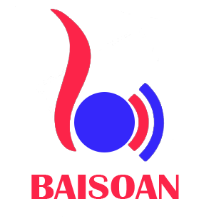In the vast tapestry of human history, there are countless traditions, rituals, and practices that have been developed to bridge the gap between the mortal and the divine. Among these, one of the most intriguing and lesser-known is Plangud, an ancient form of spiritual communication that has been practiced for centuries in certain secluded cultures. Plangud is not just a ritual; it is a profound art form that combines music, poetry, and meditation to create a sacred dialogue with the divine.
Origins of Plangud
The origins of Plangud are shrouded in mystery, with its roots tracing back to ancient civilizations that thrived in the remote valleys and mountains of the world. Some scholars believe that Plangud was first practiced by the Zharim, a mystical tribe known for their deep connection to nature and the spiritual realm. The word “Plangud” itself is derived from the ancient Zharim language, where “Plan” means “to weave” and “Gud” means “spirit” or “divine.” Together, Plangud can be interpreted as “weaving the spirit,” a fitting description for this intricate practice.
The Essence of Plangud
At its core, Plangud is a form of prayer or invocation, but it goes beyond mere words. It is a multisensory experience that engages the mind, body, and soul. The practice typically involves three key elements:
- Sacred Chants (Lumara): The foundation of Plangud lies in its chants, known as Lumara. These are not ordinary songs but carefully crafted melodies that are believed to resonate with the frequencies of the divine. Each Lumara is composed of specific tones, rhythms, and syllables that are said to open portals to higher realms. The chants are often passed down through generations, with each practitioner adding their own unique touch.
- Poetic Invocations (Veyra): Alongside the chants, practitioners recite Veyra, which are poetic invocations that express gratitude, seek guidance, or ask for blessings. These verses are deeply symbolic and often draw inspiration from nature, celestial bodies, and ancient myths. The language used in Veyra is archaic and rich in metaphor, making it a powerful tool for connecting with the divine.
- Meditative Dance (Teyora): The final element of Plangud is the Teyora, a meditative dance that accompanies the chants and invocations. The dance is slow and deliberate, with each movement symbolizing a step closer to the divine. Practitioners often enter a trance-like state during the Teyora, allowing them to transcend their physical limitations and commune with the spiritual realm.
The Ritual of Plangud
A typical Plangud ceremony is conducted in a sacred space, often outdoors in a natural setting such as a forest clearing, a mountaintop, or near a body of water. The space is adorned with symbols, candles, and offerings such as flowers, fruits, and incense. The ceremony begins at dawn or dusk, times believed to be when the veil between worlds is thinnest.
The practitioners, often dressed in flowing robes, gather in a circle and begin the Lumara. As the chants grow in intensity, they start the Teyora, moving in harmony with the rhythm of the music. The Veyra are recited at specific intervals, each verse building upon the last to create a powerful crescendo of spiritual energy. The ceremony culminates in a moment of profound silence, where participants feel a deep sense of connection with the divine.
The Modern Relevance of Plangud
In today’s fast-paced, technology-driven world, the ancient practice of Plangud offers a much-needed respite from the chaos of modern life. It reminds us of the importance of slowing down, tuning into our inner selves, and reconnecting with the natural world. While Plangud may have originated in a different time and place, its core principles of mindfulness, gratitude, and spiritual connection are timeless.
For those who are drawn to the mystical and the esoteric, Plangud provides a unique pathway to explore the depths of their spirituality. It is a reminder that the divine is not something distant or unattainable but is woven into the very fabric of our existence, waiting to be discovered through the art of sacred communication.
Conclusion
Plangud is more than just an ancient ritual; it is a living tradition that continues to inspire and transform those who practice it. By weaving together music, poetry, and dance, Plangud creates a tapestry of spiritual connection that transcends time and space. In a world that often feels disconnected and fragmented, the art of Plangud offers a glimpse into a deeper, more harmonious way of being—one where the mortal and the divine are forever intertwined.
Whether you are a seeker of spiritual wisdom or simply curious about the mysteries of the past, Plangud invites you to step into its sacred circle and experience the profound beauty of communicating with the divine.
New chat
In the vast tapestry of human history, there are countless traditions, rituals, and practices that have been developed to bridge the gap between the mortal and the divine. Among these, one of the most intriguing and lesser-known is Plangud, an ancient form of spiritual communication that has been practiced for centuries in certain secluded cultures. Plangud is not just a ritual; it is a profound art form that combines music, poetry, and meditation to create a sacred dialogue with the divine.
Origins of Plangud
The origins of Plangud are shrouded in mystery, with its roots tracing back to ancient civilizations that thrived in the remote valleys and mountains of the world. Some scholars believe that Plangud was first practiced by the Zharim, a mystical tribe known for their deep connection to nature and the spiritual realm. The word “Plangud” itself is derived from the ancient Zharim language, where “Plan” means “to weave” and “Gud” means “spirit” or “divine.” Together, Plangud can be interpreted as “weaving the spirit,” a fitting description for this intricate practice.
The Essence of Plangud
At its core, Plangud is a form of prayer or invocation, but it goes beyond mere words. It is a multisensory experience that engages the mind, body, and soul. The practice typically involves three key elements:
- Sacred Chants (Lumara): The foundation of Plangud lies in its chants, known as Lumara. These are not ordinary songs but carefully crafted melodies that are believed to resonate with the frequencies of the divine. Each Lumara is composed of specific tones, rhythms, and syllables that are said to open portals to higher realms. The chants are often passed down through generations, with each practitioner adding their own unique touch.
- Poetic Invocations (Veyra): Alongside the chants, practitioners recite Veyra, which are poetic invocations that express gratitude, seek guidance, or ask for blessings. These verses are deeply symbolic and often draw inspiration from nature, celestial bodies, and ancient myths. The language used in Veyra is archaic and rich in metaphor, making it a powerful tool for connecting with the divine.
- Meditative Dance (Teyora): The final element of Plangud is the Teyora, a meditative dance that accompanies the chants and invocations. The dance is slow and deliberate, with each movement symbolizing a step closer to the divine. Practitioners often enter a trance-like state during the Teyora, allowing them to transcend their physical limitations and commune with the spiritual realm.
The Ritual of Plangud
A typical Plangud ceremony is conducted in a sacred space, often outdoors in a natural setting such as a forest clearing, a mountaintop, or near a body of water. The space is adorned with symbols, candles, and offerings such as flowers, fruits, and incense. The ceremony begins at dawn or dusk, times believed to be when the veil between worlds is thinnest.
The practitioners, often dressed in flowing robes, gather in a circle and begin the Lumara. As the chants grow in intensity, they start the Teyora, moving in harmony with the rhythm of the music. The Veyra are recited at specific intervals, each verse building upon the last to create a powerful crescendo of spiritual energy. The ceremony culminates in a moment of profound silence, where participants feel a deep sense of connection with the divine.
The Modern Relevance of Plangud
In today’s fast-paced, technology-driven world, the ancient practice of Plangud offers a much-needed respite from the chaos of modern life. It reminds us of the importance of slowing down, tuning into our inner selves, and reconnecting with the natural world. While Plangud may have originated in a different time and place, its core principles of mindfulness, gratitude, and spiritual connection are timeless.
For those who are drawn to the mystical and the esoteric, Plangud provides a unique pathway to explore the depths of their spirituality. It is a reminder that the divine is not something distant or unattainable but is woven into the very fabric of our existence, waiting to be discovered through the art of sacred communication.
Conclusion
Plangud is more than just an ancient ritual; it is a living tradition that continues to inspire and transform those who practice it. By weaving together music, poetry, and dance, Plangud creates a tapestry of spiritual connection that transcends time and space. In a world that often feels disconnected and fragmented, the art of Plangud offers a glimpse into a deeper, more harmonious way of being—one where the mortal and the divine are forever intertwined.
Whether you are a seeker of spiritual wisdom or simply curious about the mysteries of the past, Plangud invites you to step into its sacred circle and experience the profound beauty of communicating with the divine.
New chat




![Exploring Statekaidz.com: A New Platform for [Insert Purpose or Niche]](https://baisoan.com/wp-content/uploads/2025/02/images.jpg)


